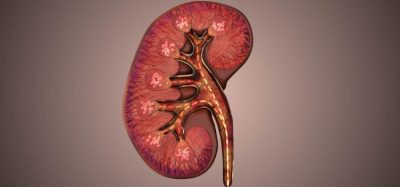ICH Q12: Technical and regulatory considerations for pharmaceutical product lifecycle management
Posted: 11 November 2019 | Dave Elder (JPAG Member and David P Elder Consultancy) | No comments yet
The International Conference on Harmonisation (ICH) is drafting guidance for product lifecycle management (ICH Q12) – currently stage 2b, which requires application of the concepts of Quality by Design (QbD) to ongoing lifecycle management and change control. Dave Elder dissects the guidance and discusses considerations for industry professionals.


ICH Q121 is intended to extend the use of QbD to established products and therefore supplements the existing QbD guidance that has been published for drug substances and drug products during product development, registration and launch; ie, ICH Q8, Q9, Q10 and Q11.2-5 The implementation of the initial QbD guidelines identified technical and regulatory failings that constrained a broader application of more flexible risk-based approaches to post-approval CMC changes as described in ICH Q82 and Q10 Annex I.4
It is envisioned that a harmonised technical and regulatory approach applied to lifecycle management should “benefit patients, industry, and regulatory authorities by promoting innovation and continual improvement in the biopharmaceutical sector, strengthening quality assurance and improving supply of medicinal products”.1 Thus, increased product and process understanding should result in a reduction in the significant number of post-approval regulatory submissions, benefitting all parties. However, the extent of both operating and regulatory flexibility will be subject to “product and process understanding (ICH Q8 and Q11), application of risk management principles (ICH Q9) and an effective pharmaceutical quality system (ICH Q10)”.1
All changes to an approved product are managed via the company’s pharmaceutical quality system
In order to ensure a standardised approach, the guidance defines the categorisation of post-approval CMC changes (chapter 2), established conditions (ECs) (chapter 3), post-approval change management protocol (PACMP) (chapter 4), product lifecycle management (PLCM) (chapter 5), pharmaceutical quality system (PQS) and change management (chapter 6), relationship between regulatory assessment and inspection (chapter 7) and post-approval changes for marketed products (chapter 8). These approaches are “complementary and are intended to link different phases of the product lifecycle”.1 Thus, in-depth pharmaceutical development activities should result in a suitable control strategy, components of which can be considered as ‘ECs’. All changes to an approved product are managed via the company’s PQS, thus any changes to ECs must also be reported to the relevant regulatory authorities. The company may propose specific reporting categories for changes to ECs, based on risk and knowledge gained through in-depth pharmaceutical development, to those regulatory authorities that support such an approach.
Additionally, a system with risk-based reporting classifications also enables the use of post-approval change management protocols that provide “predictability regarding planning for future change to ECs”. The PLCM report is an overview that clearly and transparently stipulates how the company plans to manage post-approval CMC changes. Therefore, the process outlined in ICH Q12 does not change the relationship between regulatory assessment and any subsequent inspection; however, good interactions between assessors and inspectors are critical for the implementation of ICH Q12. Finally, and importantly, ICH Q12 recommends approaches to facilitate post-approval changes to marketed products without the requirement for regulatory assessment and prior approval before the implementation of specified CMC changes.
Unfortunately, the current ICH Q12 guideline is not fully compatible with the established legal framework within the EU, particularly the use of specific ECs and with PLCM. It is hoped that these concepts will be incorporated into the final guidance within the EU when the legal framework is reviewed; if not, this will significantly devalue the impact of ICH Q12 as a truly global, harmonised guideline. Similarly, regulatory relief was a promised outcome of the original QbD guidelines (ICH Q8, Q9 and Q10) but was never forthcoming. It is hoped that the promise enshrined in ICH Q12 is not merely rhetoric but will result in concrete outcomes.
About the author
Dave Elder has nearly 40 years of service within the pharmaceutical industry at Sterling, Syntext and GlaxoSmithKline. He is now an independent GMC consultant. He is a visiting professor at King’s College, London and is a member of the British Pharmacopoeia. He is a member of the Joint Pharmaceutical Analysis Group (JPAG) and the Analytical Division Council of the Royal Society of Chemistry.
References
- ICH guideline Q12 on technical and regulatory considerations for pharmaceutical product lifecycle management. Currently Step 2b. 14 December 2017.
- ICH guideline Q8(R1) on Pharmaceutical development. Currently step 5. 22 June 2017.
- ICH guideline Q9 on Quality Risk Management. Current Step 5, version. 9 November 2005.
- ICH quality guideline Q10 on Pharmaceutical Quality System. Current Step 5 version. September 2015.
- ICH quality guideline Q11 on development and manufacture of drug substances (chemical entities and biotechnological/biological entities). Current step 3 version. May 2011.
Issue
Related topics
Drug Manufacturing, QA/QC, Quality by Design (QbD), Regulation & Legislation









